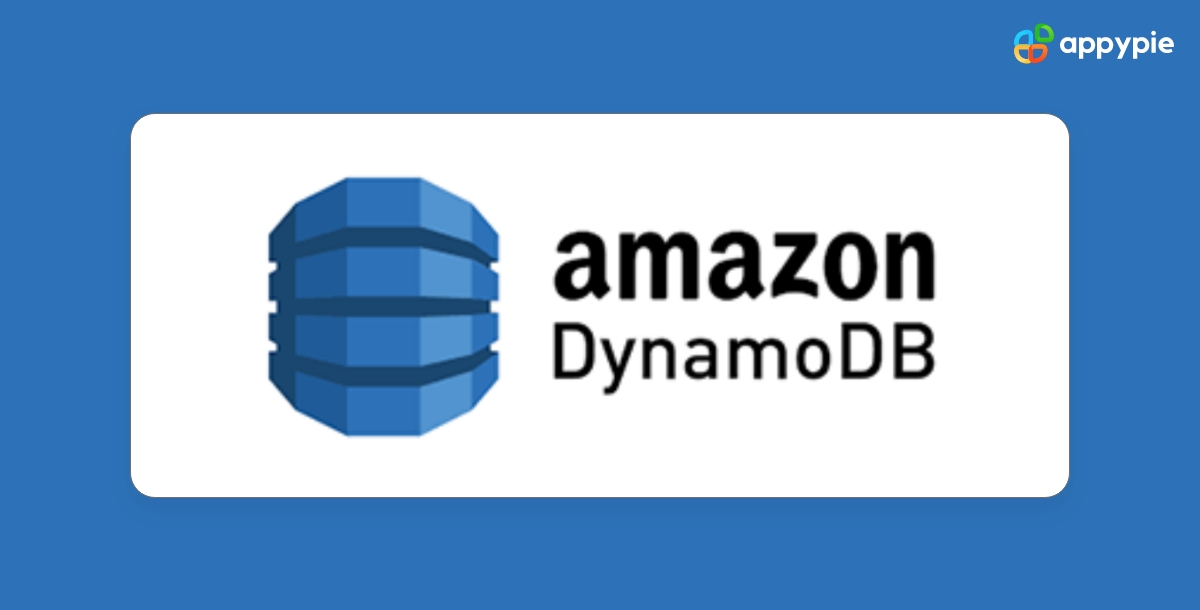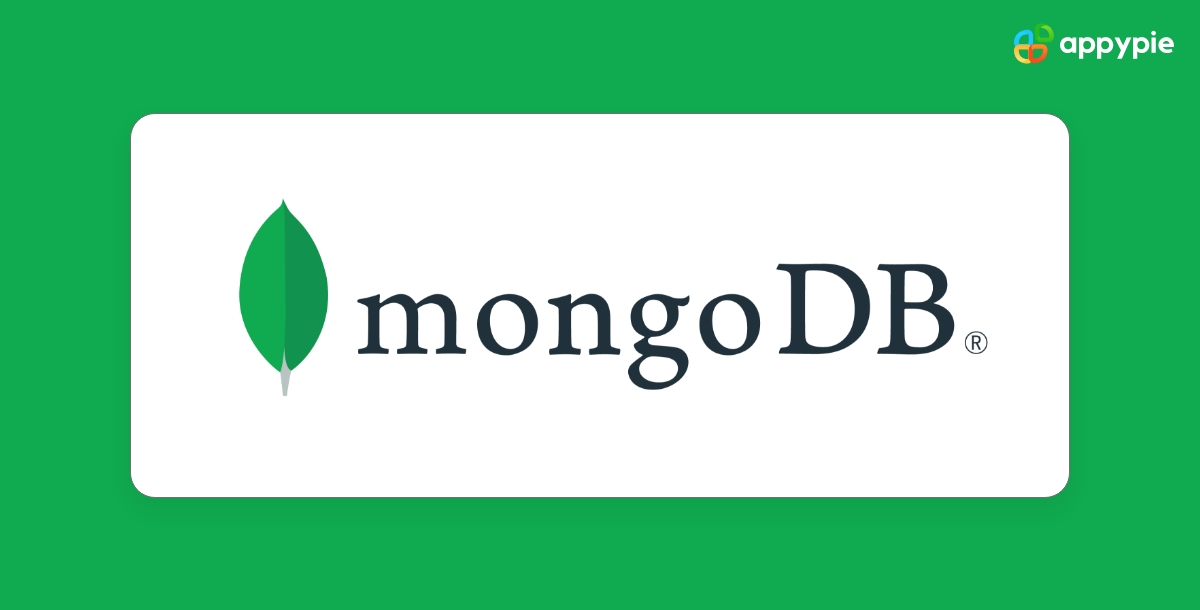DynamoDB vs MongoDB: Which NoSQL Database is Right for Your Project? [Top Integrations]

Table of Content
- Introduction
- What is DynamoDB?
- What is MongoDB?
- NoSQL Databases: An Overview
- DynamoDB Core Components
- MongoDB Core Components
- DynamoDB vs MongoDB: A Comparison
- Use Cases: When to Choose DynamoDB or MongoDB
- Importance of Integrations for NoSQL Databases
- Top DynamoDB Integrations
- Comparison of Integrations
- Conclusion
Introduction
NoSQL databases have become increasingly popular in recent years, as more and more applications require flexible and scalable data storage solutions. Among the most popular NoSQL databases are Amazon's DynamoDB and MongoDB, both of which offer unique advantages and tradeoffs. Choosing the right database for your project can be a difficult decision, and requires an understanding of the differences between the two options.
In this article, we'll explore the key features and benefits of DynamoDB and MongoDB, as well as some of the top integrations for each database. By the end of this article, you'll have a better understanding of which database is right for your project, and how to get started with integrating it into your application.
What is DynamoDB?
DynamoDB is a fully managed NoSQL database service that was developed by Amazon Web Services (AWS). It is a highly scalable and reliable database that is designed to handle massive workloads with low latency and high throughput. DynamoDB allows you to store and retrieve data from a database in a fast and efficient manner, making it a popular choice for modern web and mobile applications.

Here are some key features of DynamoDB:
- NoSQL database: DynamoDB is a NoSQL database, which means it doesn't use the traditional SQL relational data model. Instead, it uses a key-value and document data model. This allows for more flexible data structures and faster data access.
- Fully managed service: DynamoDB is a fully managed service, which means that AWS takes care of all the operational aspects of running the database. This includes hardware provisioning, software patching, and database backups. This frees up your time to focus on building your applications.
- High scalability: DynamoDB can scale horizontally to handle large amounts of data and high request rates. You can start with a small capacity and then scale up or down as needed, without any downtime or performance impact.
- Low latency: DynamoDB is designed to deliver low latency, which means that you can access your data quickly without any delays. This makes it ideal for use cases that require real-time data access, such as gaming or social media applications.
- Flexible data model: DynamoDB supports both key-value and document data models, which allows you to store different types of data in the same database. You can also add or remove attributes from a record without affecting other attributes, which makes it easy to change your data model as your application evolves.
- Strong consistency: DynamoDB provides strong consistency by default, which means that all read operations return the most recent version of the data. This is important for applications that require high data accuracy and consistency.
What is MongoDB?
MongoDB is an open-source, document-oriented NoSQL database that was developed by MongoDB, Inc. It is a highly scalable, high-performance database that is designed to handle large volumes of unstructured and semi-structured data. MongoDB is a popular choice for modern web and mobile applications that require flexible data models and high scalability.

Here are some key features of MongoDB:
- NoSQL database: MongoDB is a NoSQL database that doesn't use the traditional SQL relational data model. Instead, it uses a document data model that stores data in JSON-like documents. This allows for more flexible data structures and faster data access.
- Document-oriented: MongoDB is a document-oriented database, which means that it stores data in documents instead of tables. Each document is a self-contained unit of data that can be easily indexed and searched.
- Schema-free: MongoDB is a schema-free database, which means that you can store different types of data in the same collection without having to define a schema. This makes it easy to change your data model as your application evolves.
- Highly scalable: MongoDB can scale horizontally to handle large amounts of data and high request rates. You can add or remove nodes from a MongoDB cluster to scale up or down as needed, without any downtime or performance impact.
- High availability: MongoDB provides high availability through replica sets, which are groups of MongoDB nodes that contain identical data. If a node fails, another node can take over and serve requests without any interruption.
- Rich query language: MongoDB provides a rich query language that allows you to perform complex queries on your data. You can query documents based on their content, geospatial data, and even their position within an array.
- Flexible data model: MongoDB's flexible data model allows you to store and retrieve complex data structures, including nested documents and arrays. This makes it easy to represent real-world data in your database.
NoSQL Databases: An Overview
NoSQL databases are a type of database that diverge from the traditional relational database model. Instead of using tables with fixed schemas, NoSQL databases use flexible data models that allow for a wide variety of data types and structures. This makes them ideal for handling large, unstructured datasets, such as those generated by web applications or social media platforms.
NoSQL databases come in a variety of types, including document-based, key-value, graph, and column-family stores. Each type offers its own set of features and benefits, and the choice of database will depend largely on the specific needs of the project.
DynamoDB Core Components
Here are the core components of DynamoDB:
| DynamoDB Core Components | Description |
|---|---|
| Table | In DynamoDB, data is stored in tables. Each table consists of multiple items, and each item represents a collection of attributes. Tables can be created, updated, and deleted via the DynamoDB console, AWS CLI, or SDKs. |
| Item | An item is a collection of attributes that is uniquely identified by a primary key. In DynamoDB, items are stored in tables and can be retrieved, updated, or deleted using the primary key. |
| Attribute | An attribute is a key-value pair that represents a data point in an item. Each item can have multiple attributes, and attributes can be of different data types. |
| Primary Key | A primary key is used to uniquely identify an item in a table. DynamoDB supports two types of primary keys: partition key and composite partition-sort key. A partition key is a single attribute used to partition data across multiple nodes. A composite partition-sort key is a combination of a partition key and a sort key that is used to partition data and sort items within each partition. |
| Secondary Index | An index that allows you to query the data in a table using an alternate key. DynamoDB supports two types of secondary indexes: global secondary indexes (GSI) and local secondary indexes (LSI). |
| Streams | A feature that allows you to capture and process the changes made to your table's data in real time. Streams can be used for a variety of purposes, such as triggering Lambda functions or updating Elasticsearch indexes. |
MongoDB Core Components
Here are the core components of MongoDB:
| Component | Description |
|---|---|
| Database | A physical container for collections. |
| Collection | A collection is a group of related documents stored in MongoDB. It's similar to a table in a relational database, but like documents, collections have more flexibility in their structure. |
| Document | MongoDB stores data in flexible, JSON-like documents called BSON, which stands for Binary JSON. Documents are similar to rows in a traditional relational database, but with more flexibility since they can have varying fields and structures. |
| Field | A key-value pair in a document. |
| Index | Indexes are used to optimize queries and improve query performance. MongoDB supports several types of indexes, including single-field, compound, and multikey indexes. |
| Query | A request for data from a database. |
| Aggregation | Aggregation is the process of performing data processing operations on multiple documents in a collection. MongoDB supports a wide range of aggregation operations, including filtering, grouping, sorting, and joining. |
| Replica Set | MongoDB provides replication capabilities to ensure high availability and data redundancy. Replication involves maintaining multiple copies of data across multiple servers. |
| Sharding | Sharding is a technique used to distribute data across multiple servers to improve performance and scalability. MongoDB supports automatic sharding, which allows data to be partitioned across multiple servers automatically. |
DynamoDB vs MongoDB: A Comparison
DynamoDB and MongoDB are two popular NoSQL databases that are widely used for modern web applications. Both databases have their strengths and weaknesses, and choosing the right one for your project depends on a variety of factors.
Here's a comparison of DynamoDB and MongoDB:
| Feature | DynamoDB | MongoDB |
|---|---|---|
| Architecture type | Serverless | Client-server |
| Deployment | Managed by AWS | Self-hosted |
| Scaling | Automatic scaling | Horizontal scaling |
| Cost | Pay-per-usage | License-based or self-hosting costs |
| Performance | Low latency, high throughput | High latency, lower throughput |
| Security | AWS IAM and VPC | Built-in authentication and encryption |
| Development support | AWS SDKs and CLI | MongoDB drivers and Compass GUI |
| Integrations | Integrates well with other AWS services | Supports a wide variety of third-party integrations and plugins |
DynamoDB and MongoDB across various features, including their data model, scalability, performance, flexibility, cost, and integrations. It can be a helpful tool for comparing the two databases and determining which one is best suited for a particular project.
Use Cases: When to Choose DynamoDB or MongoDB
When it comes to choosing between DynamoDB and MongoDB, there are various factors to consider based on your specific use case.
Here are some scenarios where one database might be a better fit than the other:
| Use Case | DynamoDB | MongoDB |
|---|---|---|
| Real-time Applications | Ideal for real-time applications that require fast, consistent performance and scalability. | Also suitable for real-time applications but may require additional configuration for high availability and scalability. |
| Content Management | Good for managing large amounts of structured data, such as user profiles or product catalogs. | Better for unstructured data, such as blog posts, images, and multimedia content. |
| Mobile and Web Applications | Well-suited for mobile and web applications that require fast response times and high scalability. | Also suitable for mobile and web applications but may require additional configuration for scalability and sharding. |
| Analytics and Business Intelligence | Limited support for analytics and business intelligence tools. | Offers robust support for analytics and business intelligence tools. |
| Internet of Things (IoT) | Offers a dedicated IoT data store and built-in support for IoT data ingestion and processing. | Offers some support for IoT data but may require additional configuration for high performance and scalability. |
It's important to note that these are just general guidelines and that the best database for your use case ultimately depends on a variety of factors, such as data size, query complexity, and performance requirements.
Importance of Integrations for NoSQL Databases
Integrations play an important role in the success of NoSQL databases like DynamoDB and MongoDB. NoSQL databases are often used in conjunction with other technologies in order to build modern, scalable applications. Integrations allow NoSQL databases to work seamlessly with other tools and services, making it easier for developers to build and deploy applications quickly and efficiently. Additionally, utilizing an online SQL tool can further enhance productivity by providing a user-friendly interface and convenient access to query and manipulate data in NoSQL databases.
Integrations can provide a range of benefits, such as:
- Improved data processing: Integrating NoSQL databases with data processing tools like Apache Spark or Amazon EMR can help to streamline data processing workflows and increase the efficiency of your data analytics operations.
- Simplified data storage: Integrating NoSQL databases with cloud storage services like Amazon S3 can provide an easy and scalable way to store and access your data.
- Increased flexibility: Integrating NoSQL databases with other services can help to provide a more flexible architecture, allowing you to easily add or remove services as your needs change.
Top DynamoDB Integrations
Appy Pie Connect offers a variety of integrations that can be used with DynamoDB to improve your database's functionality and efficiency.
Here are some of the top DynamoDB integrations and their use cases using Appy Pie Connect:
| App Name | Integration | Use Case |
|---|---|---|
| Salesforce | DynamoDB with Salesforce | Sync customer data from DynamoDB to Salesforce for marketing and sales purposes |
| Salesforce with DynamoDB | Store Salesforce customer data in DynamoDB for faster data processing and analysis | |
| DynamoDB <> Salesforce | Bi-directional syncing of customer data between DynamoDB and Salesforce for seamless integration | |
| Shopify | DynamoDB with Shopify | Sync product data from DynamoDB to Shopify for e-commerce purposes |
| Shopify with DynamoDB | Store Shopify order and customer data in DynamoDB for faster processing and analysis | |
| DynamoDB <> Shopify | Bi-directional syncing of customer and order data between DynamoDB and Shopify for seamless integration | |
| Slack | DynamoDB with Slack | Get notified in Slack when a new record is added to a DynamoDB table |
| Slack with DynamoDB | Add a new record to a DynamoDB table when a certain keyword is mentioned in a Slack channel | |
| DynamoDB <> Slack | Bi-directional syncing of data between DynamoDB and Slack for better communication and collaboration | |
| Twilio | DynamoDB with Twilio | Send SMS notifications to customers based on data stored in DynamoDB |
| Twilio with DynamoDB | Store customer SMS and call data in DynamoDB for faster processing and analysis | |
| DynamoDB <> Twilio | Bi-directional syncing of customer SMS and call data between DynamoDB and Twilio for better customer communication |
Top MongoDB Integrations
Here are some of the top MongoDB integrations and their use cases using Appy Pie Connect:
| Integration | Use Case |
|---|---|
| Salesforce | Integrate MongoDB with Salesforce to streamline sales data and automate lead generation and follow-ups. |
| Slack | Connect MongoDB with Slack to monitor database events and receive notifications in real-time. |
| Zendesk | Use MongoDB and Zendesk integration to manage customer interactions and support tickets more efficiently. |
| Mailchimp | Integrate MongoDB with Mailchimp to automate email marketing campaigns and track their effectiveness. |
| Google Sheets | Connect MongoDB with Google Sheets to transfer data between the two and generate reports and charts. |
| Trello | Use MongoDB and Trello integration to create cards and boards based on database events and changes. |
| Shopify | Integrate MongoDB with Shopify to manage product catalogs, inventory, and customer data. |
| Jira | Connect MongoDB with Jira to track bugs and issues, manage development workflows, and collaborate with the team. |
Comparison of Integrations
Here's a comparison for some of the top integrations available for DynamoDB and MongoDB:
| Integration | Description | DynamoDB | MongoDB |
|---|---|---|---|
| Amazon S3 | Store and retrieve any amount of data from anywhere | ✅ | ✅ |
| Amazon Kinesis | Collect, process, and analyze real-time streaming data | ✅ | ❌ |
| AWS Lambda | Run code without provisioning or managing servers | ✅ | ✅ |
| AWS Glue | Easily extract, transform, and load data | ✅ | ✅ |
| Appy Pie Connect | Connect various apps and automate workflows | ✅ | ✅ |
| Apache Kafka | Distribute data and process streams in real-time | ✅ | ✅ |
Conclusion
Choosing between DynamoDB and MongoDB for your project ultimately depends on your specific requirements and use case. While both databases are capable of handling large amounts of unstructured data, DynamoDB is a better choice for projects that require high performance, scalability, and serverless architecture, while MongoDB is ideal for projects that require more flexibility and customization.
When it comes to integrations, both databases have a variety of options available to connect with other tools and platforms. Using Appy Pie Connect, an AI-driven integration platform, can make the process of connecting your NoSQL database with other apps and services even easier.
Overall, understanding the differences and similarities between DynamoDB and MongoDB, as well as exploring the top integrations available, can help you make an informed decision on which database is the right fit for your project.
Related Articles
- Best Happy 18th Birthday Messages
- Top 20 Best Used Car Websites in India & Around the World
- ChatGPT vs. GPT-3: The Key Differences
- 7 Effective Ways to Automate Microsoft Excel in 2024
- Best Food Logos That Will Leave You Craving More
- Zendesk vs. Zoho Desk: Which One is Better to Use in 2024?
- 11 Best Gorgias Alternatives in 2023
- Midnight Blue Color: All You Need to Know
- What is NFT Art Finance and How to Buy NFT Art Finance?
- How to Format Your Blog & Know About Blog Formats, Types & FAQs
